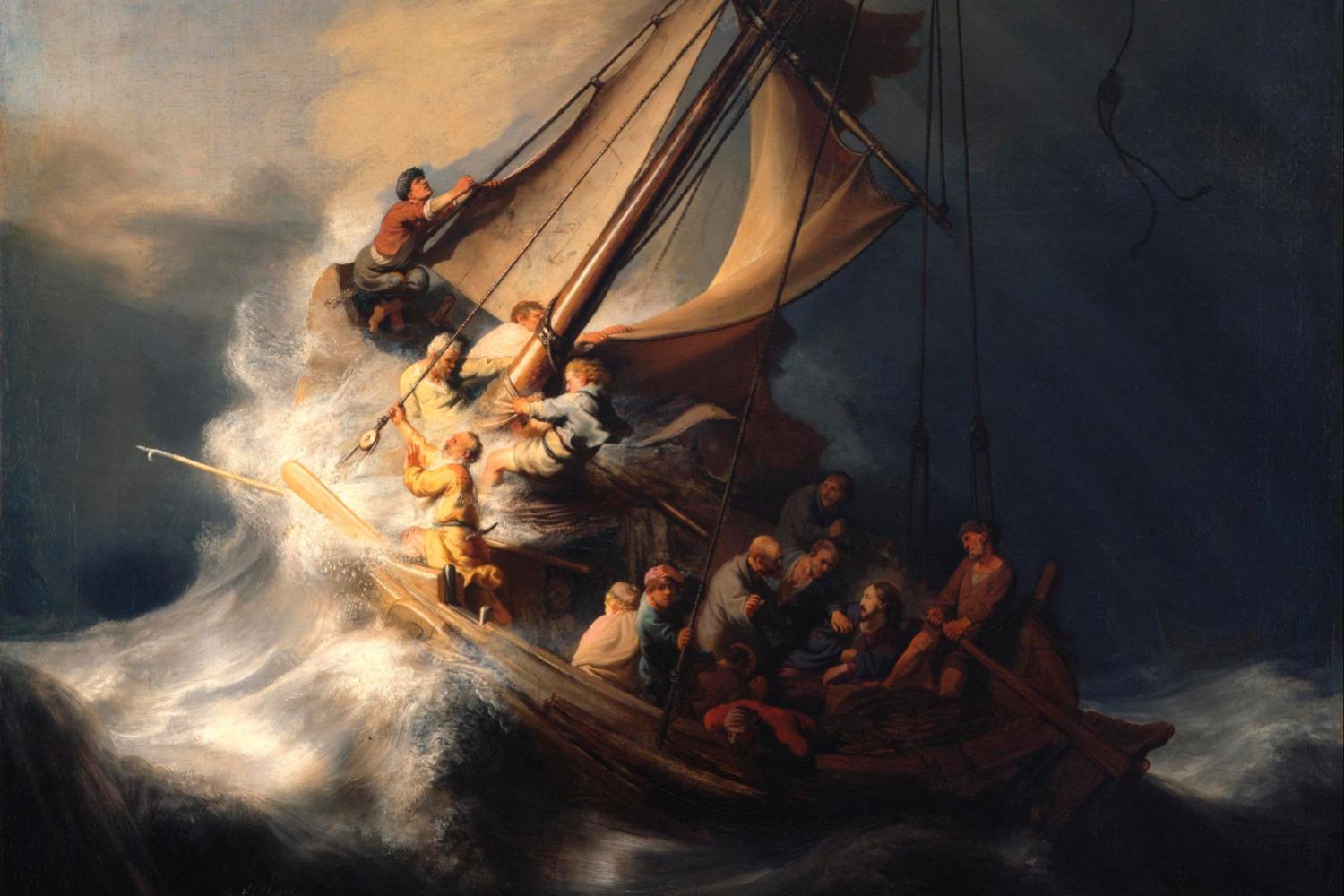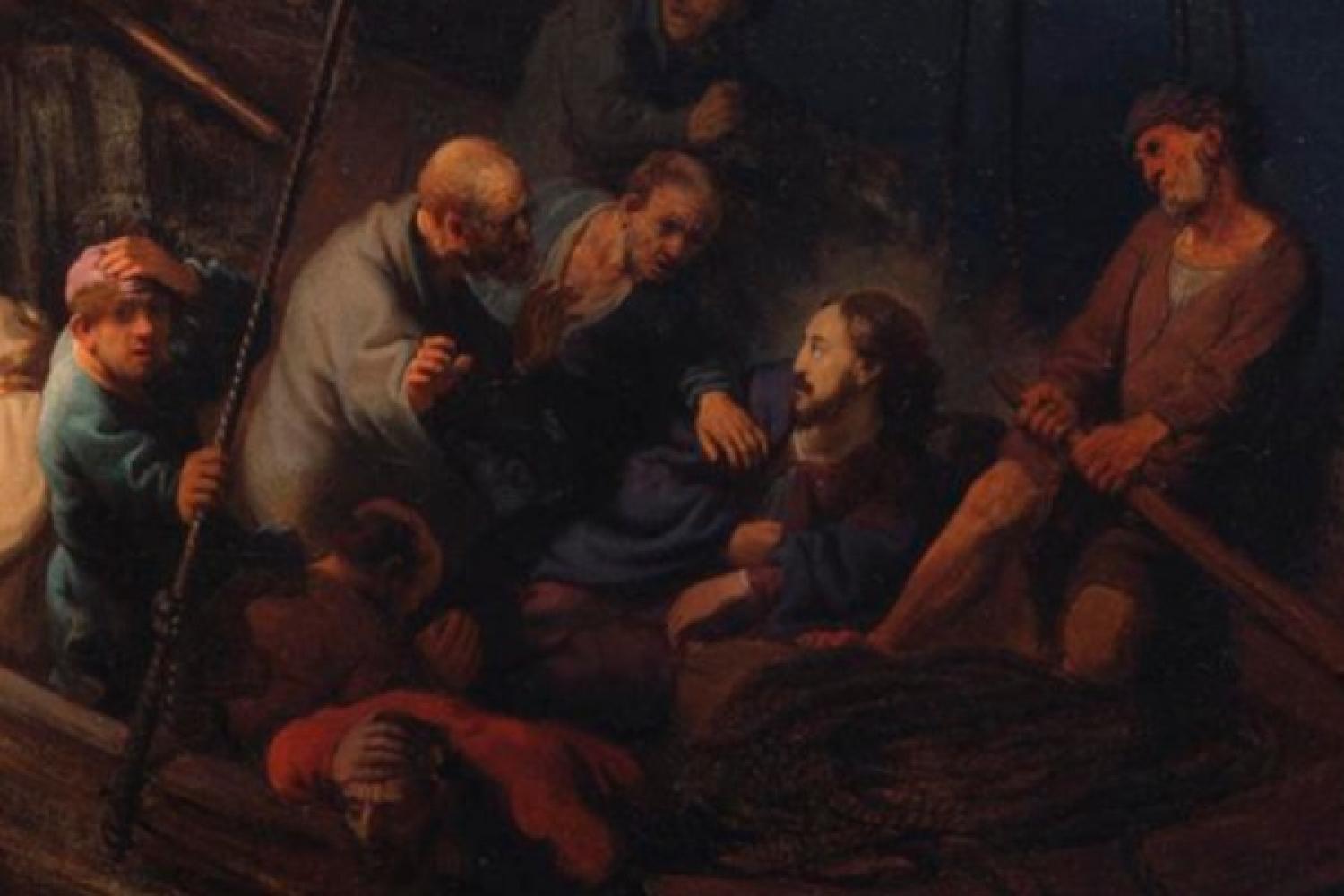
While seascapes were commonly depicted by painters of the Dutch Golden Age, The Storm on the Sea of Galilee is the only seascape painted by Rembrandt van Rijn. The seascape paintings of this era marked the first time European artists sought to produce realistic depictions of natural settings, utilizing the allure of the sea and the power of storms to present images of tremendous meaning.
Rembrandt is counted amongst the greatest artists to have ever lived. Born in Leiden in the Dutch Republic in 1606, Rembrandt apprenticed under Jacob van Swanenburg in Leiden for several years before moving to Amsterdam to apprentice under a Pieter Lastman. The former was known for his historical and Christian paintings; the latter for his focus on faces and fine details when painting the human body. While Rembrandt’s career was largely confined to Leiden and Amsterdam (in fact, he never crossed over the borders the Dutch Republic), the subject matter of his paintings varied tremendously, including portraits, animal studies, landscapes, and religious, historical, and mythological scenes.
Rembrandt painted The Storm on the Sea of Galilee in 1633. The painting was famously stolen, along with a dozen other works, in the still-unsolved 1990 Isabella Stewart Gardner Museum theft in a heist nearly as compelling as the miracle it depicts. Rembrandt’s work reflects upon the Gospel of Mark:
None of the disciples’ eyes seem to look towards a detail that is so obvious to us, the viewers. Despite the storm that rages around them, they are sailing into the light. In the stern of the ship, Christ is visible:

The First Draught
To receive the Weekly Update in your inbox every week, along with our weekly Lectio Brevis providing insights into upcoming Mass readings, subscribe to The First Draught.
